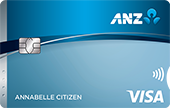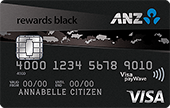New to earning cashback or maybe you're a seasoned pro at earning cashback and would like to get more from your credit card. Find out how cashback credit cards work, what they offer, and how to maximise their potential.
What is a cashback credit card?
A cashback credit card gives you money back as a credit on your account or as a voucher that can be redeemed at certain stores.
In Australia, it is more likely that cashback will be offered as a sign up bonus or as a voucher for hitting a spending target. Credit cards that give you back a percentage of whatever you spend are less common.
Some banks offer all their customers cashback incentives for spending at certain partner stores. For example, ANZ credit card customers can link their card with Cashrewards and earn casback at higher rates than is standard. Similarly, Westpac and CommBank users can access cashback deals at specific stores from online banking.
Different types of cashback credit card offer
Cashback credit cards gives you money back in some form or another, but how they do so differs.
- Cashback based on spend. The most straightforward type of cashback credit card is one that pays back cash at either a fixed percentage rate (e.g. 10%) on all purchases made with the card, or a fixed amount of cash for reaching a specified spending target (e.g. $200 for spending $4,000). However, the cashback amount is almost always capped.
- Cashback as a sign up bonus. More recently, several banks have offered cashback as a sign up bonus instead of points since some customers are unsure of the value of rewards points (or are unable to use them).
- Cashback as vouchers. Other cashback cards may award an annual travel voucher (e.g. a voucher worth $400) to be spent with a particular airline or with a travel agency operated by or affiliated with the card issuer. This is a particularly valuable kind of cashback for regular travellers, since it is awarded every year and the amount may totally offset the card’s annual fee.
- Cashback as a refunded annual fee. Some banks may offer to refund the annual fee every year to cardholders who reach a specified spending target (e.g. $6,000) during the year.
Cashback offers tend to change on a regular basis, so it may be the case that some of these offers are not available when you are comparing cashback credit cards.
What is the best cashback credit card?
Since there are different types of credit card cashback offers, the best cashback credit card depends on what you are looking for.
For ongoing cashback
If you want to get cashback on every $1 spent, then you'll need a card that rewards based on spend.
Check what the cashback rate is per $1 and what caps apply. The American Express Cashback Credit Card was an example of one such card, but has since been pulled from the market leaving very few cards that have cashback per dollar spent.
For a welcome cash bonus
Look for cards with a cash welcome bonus. Most banks in Australia use sign up bonuses to attract new customers and incentivise them to spend. This type of cashback offer is more readily available. The welcome cash bonus can be hundreds of dollars for higher end cards.
It's quite likely that you'll need to hit a spending target in order to get the cash bonus. Note that cards with this type of offer generally do not earn cashback on an ongoing basis.
How to compare cashback credit cards
To find the right card for you, it is very important to look at all the features of cashback credit cards before applying to make sure the deal will be genuinely beneficial.
- Annual fee. Calculate your estimated cashback and compare this figure with the annual fee. If the annual fee is greater, then you are not going to get any benefit from the card.
- Interest rate. Cashback credit cards often feature a relatively high interest rate, which is applied to any outstanding balance on your account. If for any reason you are unable to pay your monthly bill in full, a high rate could quickly negate the savings you make on the cashback.
- Rewards points. Many credit cards with cashback as a sign up bonus also offer ongoing rewards points or frequent flyer points on purchases. Check what the earn rate is per $1 spent.
- Introductory offers. Some cashback cards offer a large quantity of bonus rewards or frequent flyer points as well as cashback for reaching a specified spending target within the first two or three months after card approval. For example, you could get 50,000 frequent flyer points plus $100 cashback for spending $2,000 in the first three months.
- Balance transfers. These cards also often feature the option to transfer a balance so you can repay your existing credit card debt at a lower interest rate, or even 0% interest. You should be aware that balances transferred do not earn any cashback, and if your priority is repaying your debt, you are probably better off choosing a different type of card with a better balance transfer offer.
- Restrictions and penalties. As well as placing a cap on the amount of cashback, banks usually impose restrictions on the type of spending that is eligible, excluding all cash equivalents such as cash advances, buying foreign currency and travellers’ cheques, balance transfers and gambling payments. There will also be penalties for missing payments or paying late. Study all the terms and conditions to ensure you can get the best return.
Considerations for choosing a cashback credit card offer
It's rarely a straight forward choice. Apart from comparing the main rates and fees, there are some additional things to think about before applying.
- Is it worth it? Since there are spending caps in place for cards that earn cashback per $1, the amount of cashback earned simply may not be worth it for you. However, these cards tend to come with other perks (like insurance) that may make it more beneficial.
- Can you hit the spend target? If you know you have a substantial upcoming purchase, you could hit the spending target for a welcome cash bonus and substantially offset the cost of the purchase. However, not paying off the balance will negate the cashback the longer it stays on your card.
- If the bank gives cashback with a voucher, can you use it? Some banks use vouchers for welcome bonuses. Check whether you will be able to use it for something beneficial to you.
Cashback credit card value proposition
How much can you make from a cashback credit card? It really depends on the type of card, caps, and how much you can spend.
Ongoing cashback
Here's what you could get back on a card that earns 1% cashback capped at $200 annually with a $120 annual fee.
- Spending $500 / month. You would earn $60 cashback for the year. The annual fee would be partially offset.
- Spending $1,000 / month. You would earn $120 cashback for the year and completely offset the annual fee.
- Spending $2,000 / month. You would exceed the cap and earn $200 cashback for the year, coming out $80 ahead.
While the cashback rate is important, it's the cap and monthly spend that really determines how much you can get back. Since the amount of money is not very substantial over the course of a year, it's worth taking into account other perks and benefits when deciding which to apply for.
Welcome cash bonus
This is how it would work out with a card that does not earn ongoing cashback per $1 but does have a $400 welcome bonus, which requires spending $4,000 or more within 120 days of approval, with a $50 annual fee.
- Spending $1,000 / month. You did not spend enough to get the welcome bonus and have to pay the $50 annual fee. (You may be able to increase how much you spend and hit the target, then fall back to a lower amount per month.)
- Spending $2,000 / month. You get the $400 welcome bonus, which offsets the annual fee entirely. You are $350 ahead over the year.
Cashback credit cards vs rewards credit cards
The main difference between cashback credit cards and rewards credit cards is the type of benefit earned from your spend.
Instead of (or sometimes as well as) earning points for rewards, cashback credit cards give you money back (or some kind of cash equivalent, such as a travel voucher) on your spending. Put simply, this means you save money on your expenses, usually for a limited time.
Pros and cons
Pros
- Earn money on what you were going to spend anyway. Get cashback on everyday purchases, saving you money in the long run.
- Flexibility. For some, cash is king and more preferable and easier to redeem compare to points.
- Welcome bonuses. Many cards have large cash bonuses for new cardholders.
- Annual fee offsets. Cashback can be used to offset or reduce annual fees.
Cons
- Limits apply. Most cards cap how much cashback can be earned over a given period of time.
- Exclusions and restrictions. Not all transactions earn cashback, such as cash withdrawals and balance transfers.
- Higher interest rates. Cashback cards might have higher interest rates compared to more basic cards.
- Spending targets. To qualify for the welcome bonus may require hitting a specific spending target.









